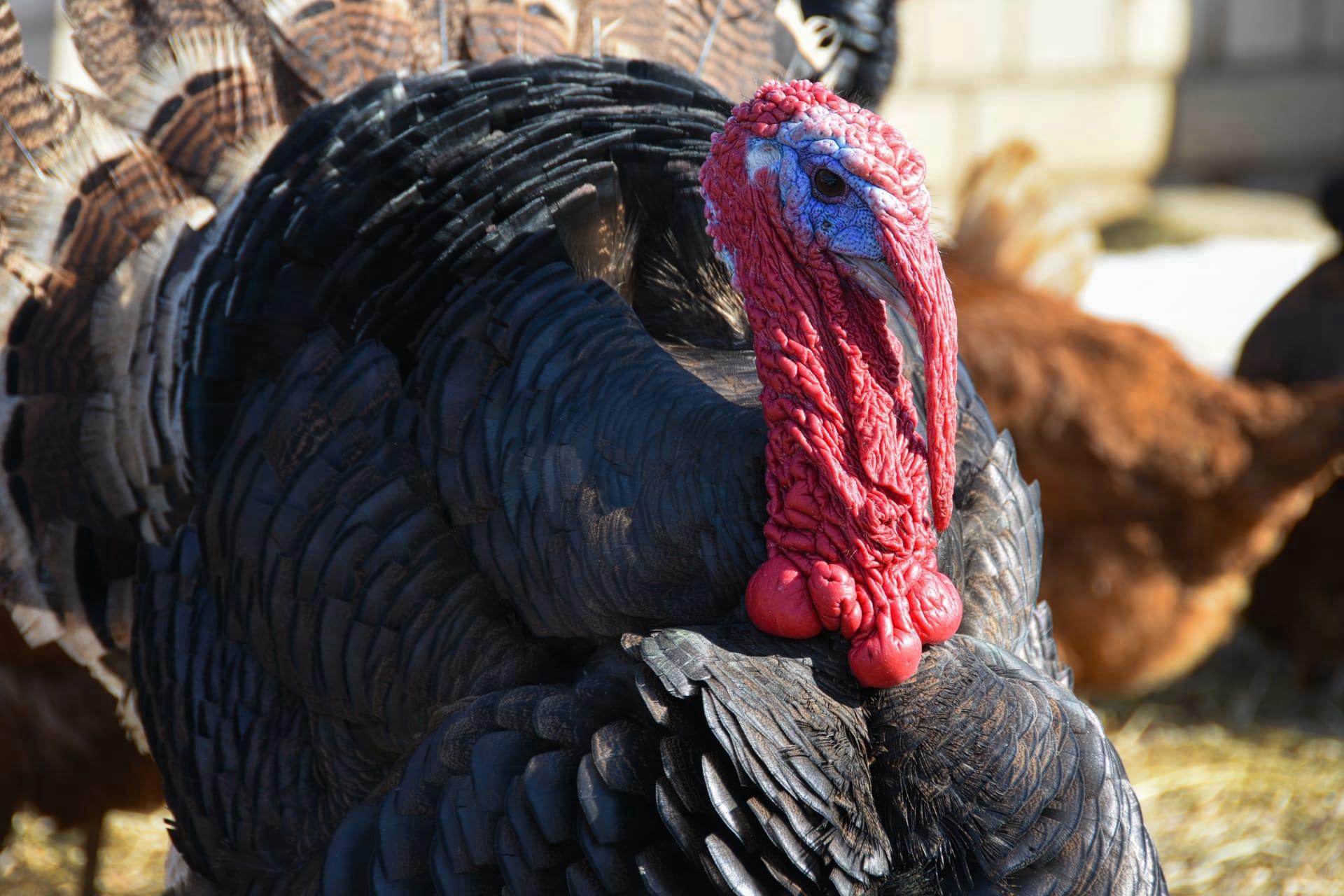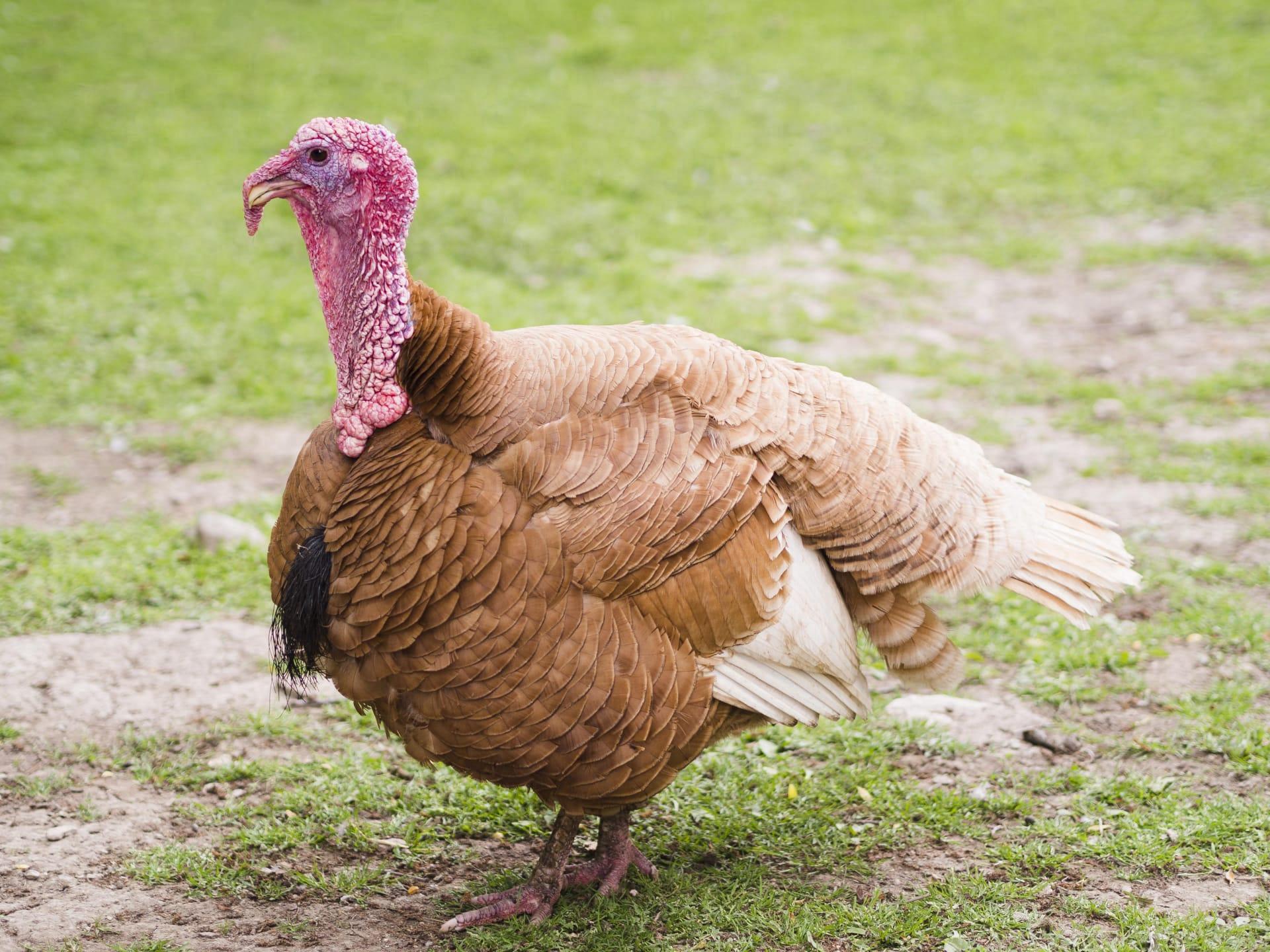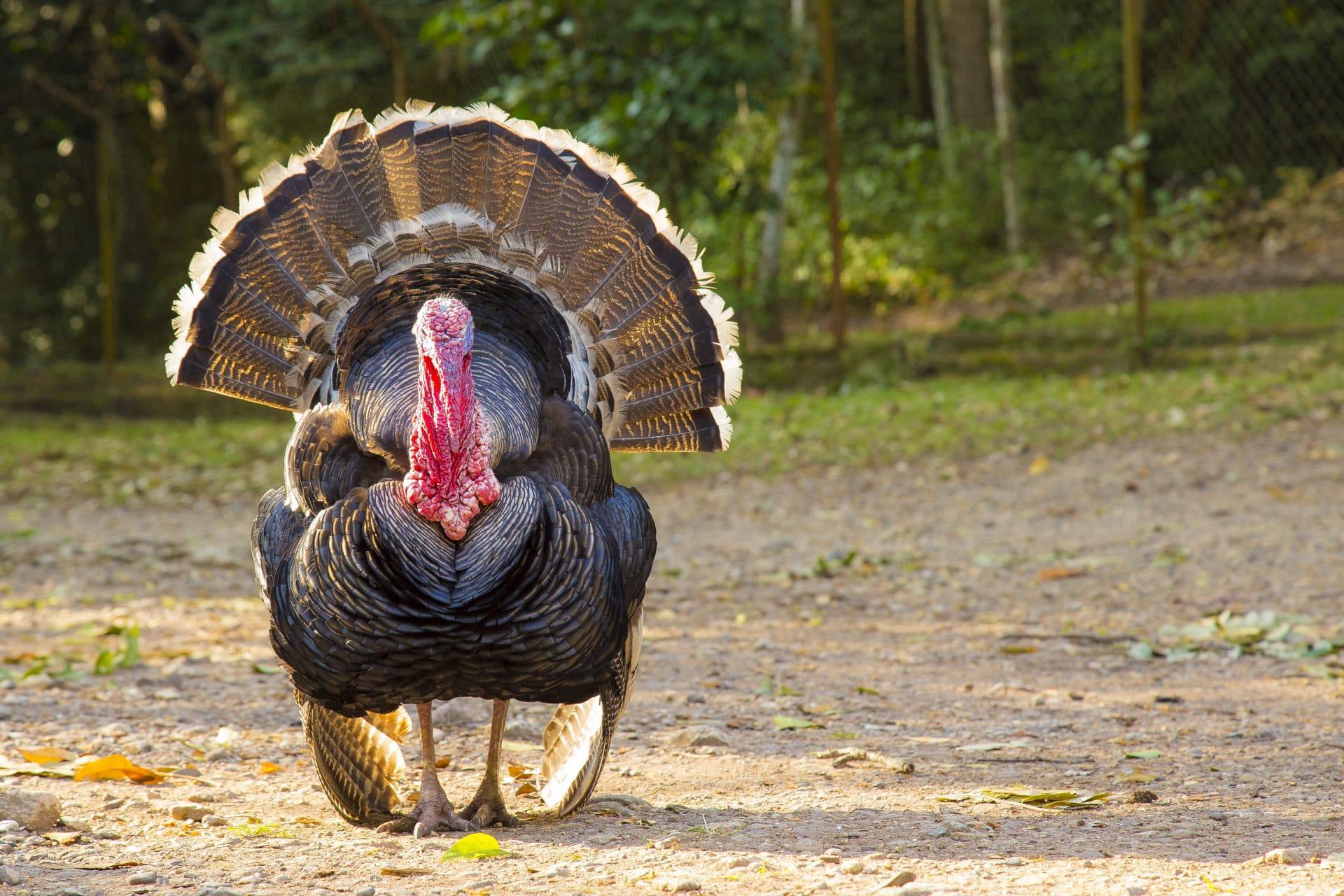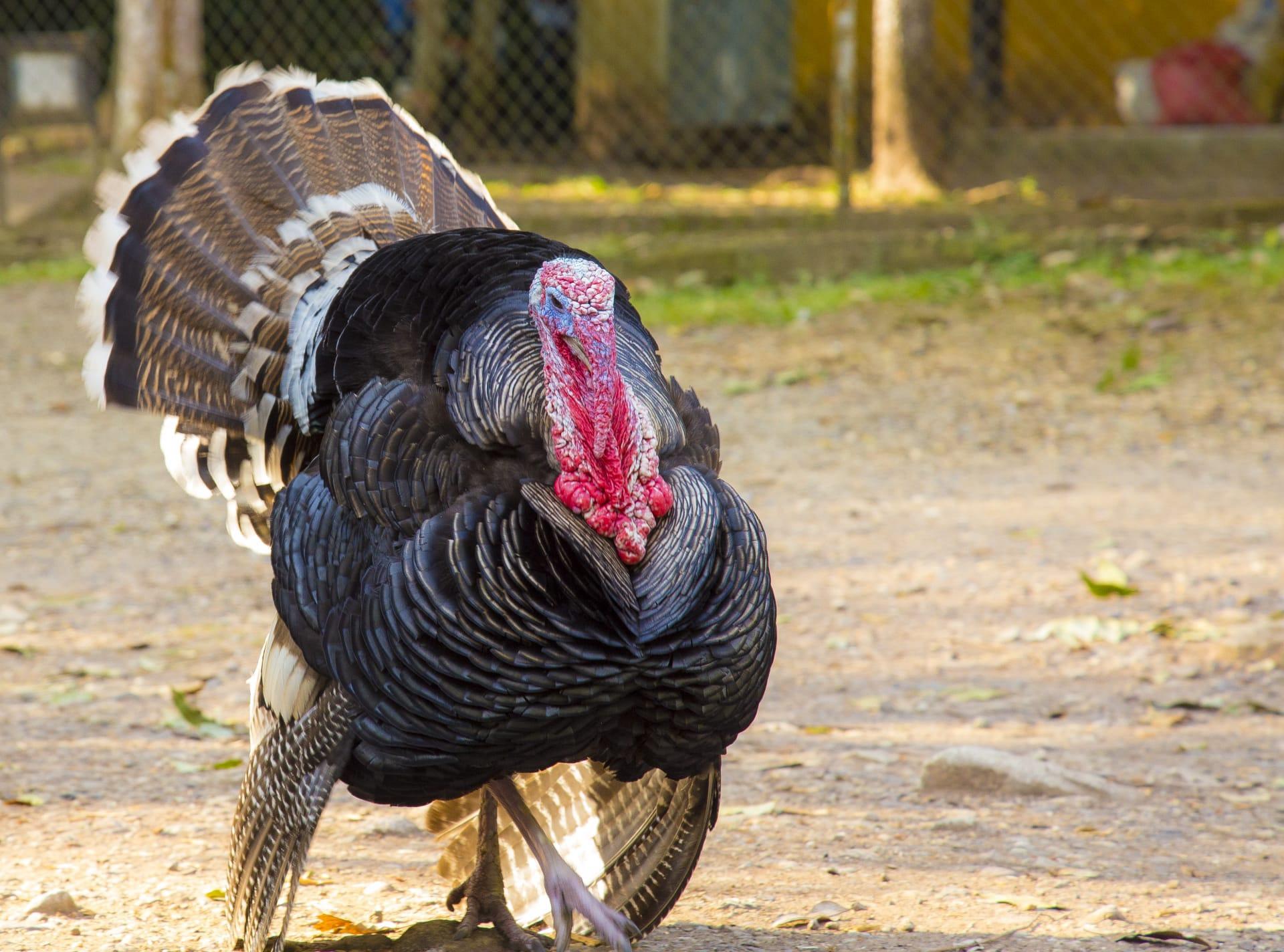Turkey Trivia
- Home /
- Trivia Question /
- Animal /
- Turkey Trivia
1
Question: How much can a mature turkey weigh?
Answer: Mature turkeys show quite a range in weight. Wild turkeys are generally lighter, with males, known as toms, weighing about 16 to 24 pounds, while females, called hens, average around 8 to 12 pounds. On the other hand, domestic turkeys, especially those bred for consumption, can be much heavier. Broad-breasted varieties, common in commercial farming, can reach up to a hefty 40 pounds!
Question: What's the fastest speed a turkey can run?
Answer: Turkeys are not just for Thanksgiving; they're speedy birds too! Wild turkeys can run at impressive speeds, reaching up to 20 to 25 miles per hour on the ground. This is quite the sprint, especially considering their size. In the air, they're even faster, capable of flying short bursts at speeds of up to 55 miles per hour!

2
Question: Can turkeys really drown by looking up in the rain?
Answer: This is a popular myth, but it's just that—a myth. Turkeys, like many birds, have a unique skeletal structure and head posture that prevents water from entering their nostrils even if they look up during rain. So, no, turkeys do not drown from looking up in the rain. They're much smarter than that!
Question: Is it true that only male turkeys gobble?
Answer: Yes, this one is true! In the turkey world, gobbling is a guy thing. Male turkeys, or toms, gobble to attract females and establish dominance over other males. Females, or hens, make a clicking noise instead. So, if you hear a gobble in the wild, you're most likely listening to a tom announcing his presence.

3
Question: What's the reason behind the different colors of a turkey's head?
Answer: The head of a turkey is a mood ring of sorts. The color changes based on the turkey's emotions and physical health. When calm and relaxed, their head appears pale and somewhat blue. But during mating season or when agitated, it turns bright red, white, and blue—a patriotic display, indeed! These changes are due to blood vessel contractions and expansions under their skin.
Question: Do turkeys have good eyesight?
Answer: Turkeys have excellent eyesight. Their eyes are located on the sides of their heads, giving them a wide field of vision of about 270 degrees. This panoramic view helps them spot predators easily. They're particularly adept at seeing movement, which is crucial for their survival in the wild. However, their night vision isn't as sharp as their daytime vision.

4
Question: How long do wild turkeys live?
Answer: The lifespan of a wild turkey varies based on factors like habitat and predation, but on average, they live for about 3 to 5 years. Some can live longer, up to 10 years, under ideal conditions. In comparison, domesticated turkeys raised for consumption have much shorter lifespans, often less than a year.
Question: Can turkeys fly, and if so, for how long?
Answer: Yes, contrary to popular belief, wild turkeys can fly! They're not long-distance fliers, though. Typically, they fly close to the ground for no more than a quarter-mile at a time. This ability is particularly useful for roosting in trees to avoid predators. Domestic turkeys, especially the larger breeds, are generally too heavy to fly.

5
Question: What's the purpose of the 'wattle' on a turkey's neck?
Answer: The wattle, that fleshy bit hanging from a turkey's neck, isn't just for show. It plays a role in both thermoregulation and courtship. During mating season, the wattle becomes engorged and changes color, helping the turkey attract a mate. It also helps regulate body temperature by adjusting blood flow.
Question: Do turkeys have a sense of taste?
Answer: Turkeys do have a sense of taste, but it's not as developed as in humans. They have around 200 to 400 taste buds, compared to our 10,000. Their taste buds are located at the back of their throat, so they're more adapted to a sense of touch and temperature in their mouths rather than an extensive palette of flavors.